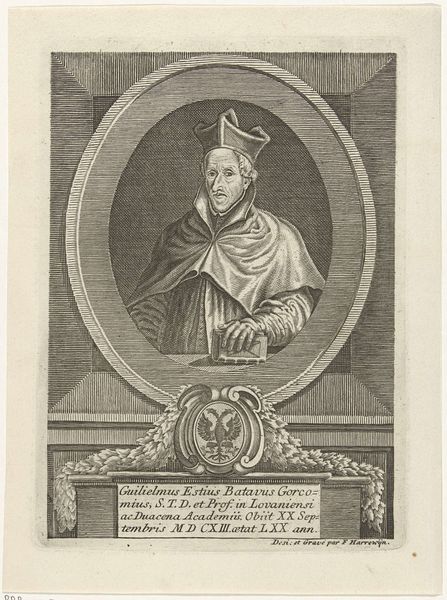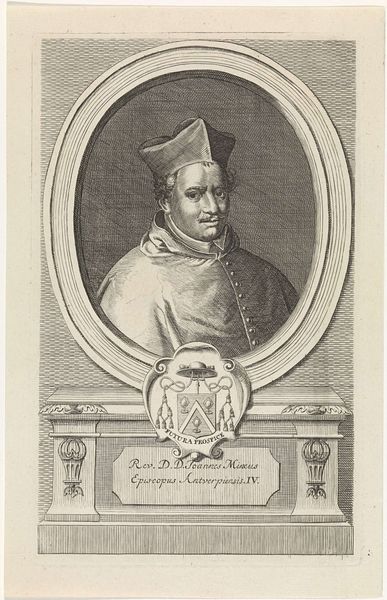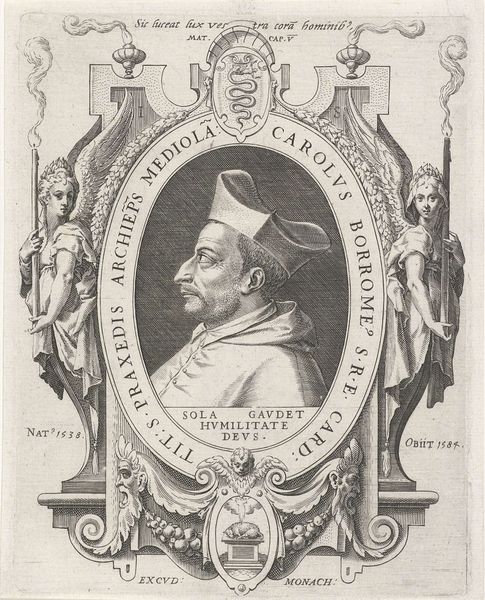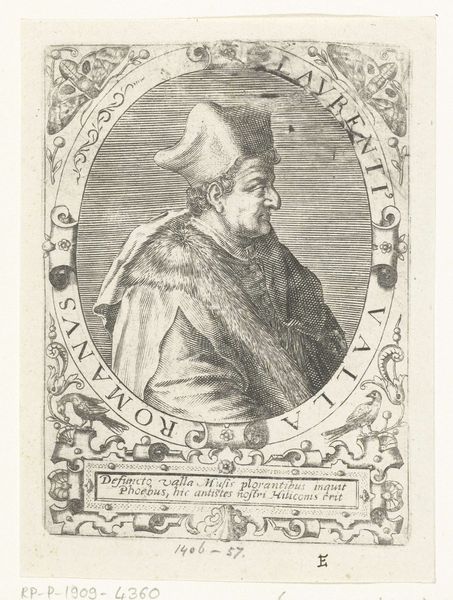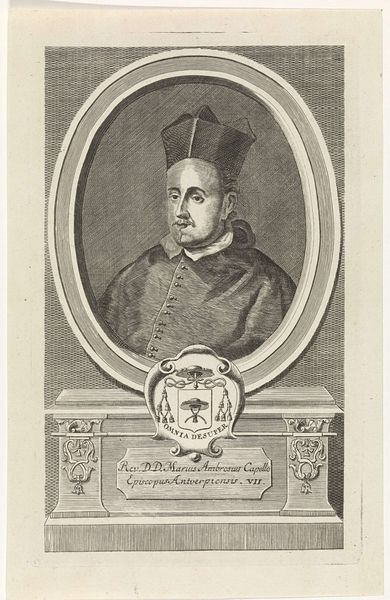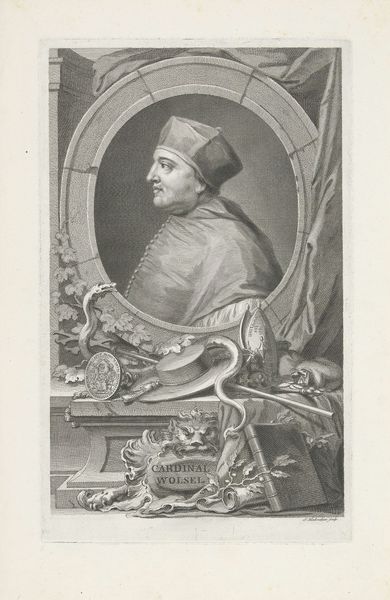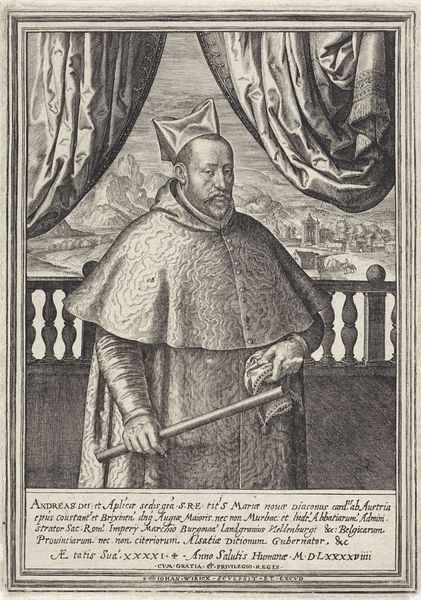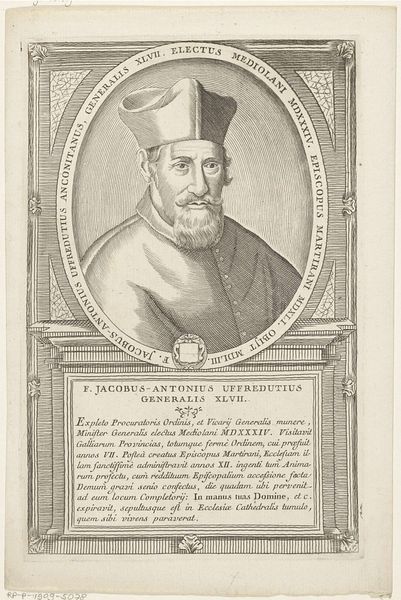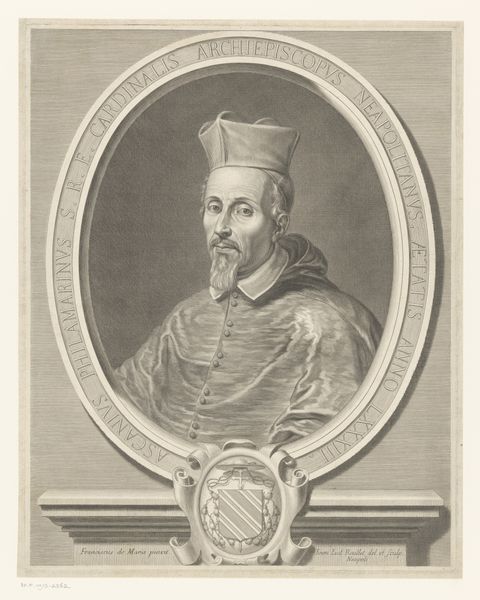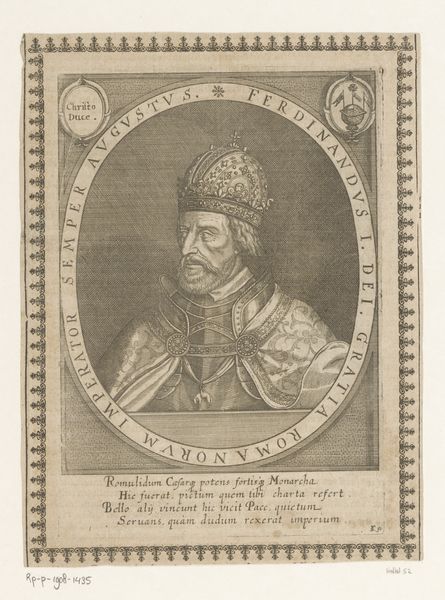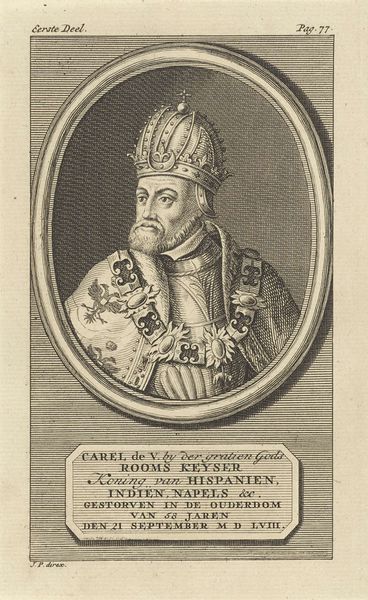
print, engraving
#
portrait
# print
#
mannerism
#
history-painting
#
northern-renaissance
#
academic-art
#
engraving
Dimensions: height 456 mm, width 366 mm
Copyright: Rijks Museum: Open Domain
Georg van de Velden’s portrait of Archduke Albert of Austria, created in 1597, presents us with a man of significant power, enmeshed in the religious and political complexities of his time. Albert, dressed in the robes of a cardinal, is framed by symbols of worldly authority, including cherubic figures playing with globes. The double-headed eagle above him is the heraldic symbol of the Austrian Habsburg dynasty. This carefully constructed image reflects the intersection of religious office and dynastic power, so characteristic of the period. Born into the Habsburg dynasty, Albert’s life was shaped by the religious and political struggles of 16th-century Europe. Serving as a cardinal, governor of the Spanish Netherlands, and eventually sovereign of the Low Countries alongside his wife Isabella, Albert occupied a unique position. This portrait not only captures Albert’s likeness but also speaks to the complex web of power, identity, and religious authority that defined his world. It invites us to consider the human figure behind these symbols of authority, and the personal choices made within the confines of religious and political expectations.
Comments
No comments
Be the first to comment and join the conversation on the ultimate creative platform.

